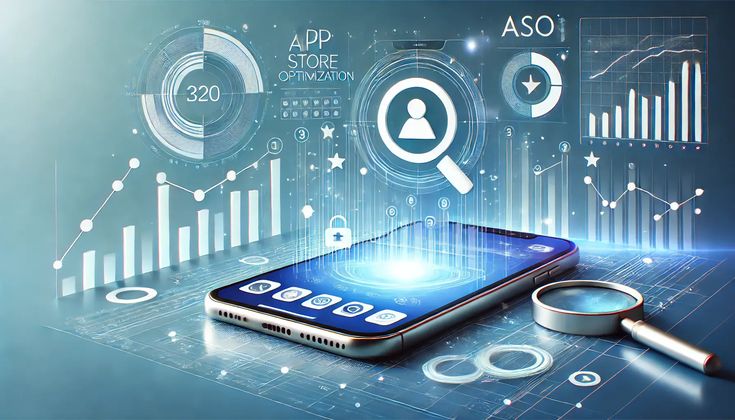Increasing app downloads and user engagement requires a comprehensive strategy that blends organic growth tactics, targeted advertising, optimized user experience, and ongoing engagement initiatives. Below is an elaborate guide detailing actionable steps and strategies to achieve these goals.
1. Optimize Your App Store Listing (ASO)
App Store Optimization (ASO) is essential for visibility and discoverability. It ensures your app stands out in app stores, leading to increased downloads. Focus on the following:
a. Keyword Optimization
- Research keywords relevant to your app’s features and audience.
- Use these keywords strategically in the app title, description, and metadata.
b. Compelling Visuals
- Create an eye-catching app icon that reflects your brand.
- Use high-quality screenshots and demo videos showcasing your app’s functionality and benefits.
c. Engaging Descriptions
- Write concise yet persuasive descriptions highlighting the app’s unique selling points (USPs).
- Include a clear call-to-action (CTA) encouraging users to download the app.
d. Positive Reviews and Ratings
- Encourage satisfied users to leave positive reviews.
- Address negative reviews constructively to show responsiveness.
2. Leverage Paid Advertising
Paid ads are a fast and effective way to increase visibility and downloads. Consider these platforms and tactics:
a. Google Ads and Apple Search Ads
- Use keyword-based campaigns to target users searching for apps like yours.
- Focus on high-intent keywords to maximize conversions.
b. Social Media Advertising
- Platforms like Facebook, Instagram, TikTok, and LinkedIn offer precise targeting options based on demographics, interests, and behavior.
- Use engaging visuals and videos to capture user attention.
c. Influencer Partnerships
- Collaborate with influencers to promote your app to their followers.
- Choose influencers aligned with your target audience for maximum impact.
3. Build a Strong Social Media Presence
Social media is a powerful tool for driving downloads and engagement. Here’s how to use it effectively:
a. Create Shareable Content
- Post relatable and engaging content, such as memes, tutorials, and success stories.
- Use platform-specific features like Instagram Reels, YouTube Shorts, or TikTok to reach a wider audience.
b. Engage with Your Audience
- Respond to comments, messages, and mentions promptly.
- Conduct polls, quizzes, and live sessions to interact with your audience.
c. Run Contests and Giveaways
- Encourage users to download and share your app for a chance to win rewards.
- Offer exclusive perks for referrals.
4. Utilize Influencer Marketing
Influencer marketing can drive significant traffic to your app. Here’s how to make it work:
a. Micro-Influencers for Niche Audiences
- Collaborate with micro-influencers who have loyal and engaged followers in your niche.
- Their recommendations often carry more authenticity and trust.
b. Creative Campaigns
- Encourage influencers to create unique content, such as tutorials or challenges, featuring your app.
- Track performance using custom discount codes or affiliate links.
5. Prioritize User Engagement
Retaining users is as important as acquiring them. Engagement strategies include:
a. Personalized Onboarding
- Design a seamless onboarding process tailored to user preferences.
- Use interactive tutorials and tips to guide users.
b. Push Notifications
- Send timely and relevant notifications, such as reminders, updates, or special offers.
- Avoid overusing notifications to prevent annoyance.
c. Gamification
- Add elements like rewards, badges, or leaderboards to make the app experience more engaging.
- Use daily challenges or streaks to encourage consistent use.
d. User Feedback
- Regularly collect feedback through surveys or in-app prompts.
- Implement changes based on user suggestions to demonstrate value.
6. Offer Incentives
Incentives encourage both downloads and engagement. Consider the following:
a. Referral Programs
- Reward users who invite friends to download your app.
- Offer discounts, free trials, or bonus features as rewards.
b. Loyalty Programs
- Create a point-based system for frequent users to unlock exclusive perks.
- Tie rewards to actions like making purchases or completing milestones.
c. Exclusive Content
- Offer premium features or early access to new functionalities for engaged users.
7. Collaborate with Strategic Partners
Partnerships can amplify your app’s reach. For example:
a. Cross-Promotions
- Partner with apps or brands that target similar audiences.
- Exchange promotional opportunities, such as app mentions or bundled offers.
b. Corporate Partnerships
- Collaborate with businesses to provide your app as a value-add for their customers.
- Negotiate bulk licensing deals for apps targeting enterprise users.
8. Focus on Content Marketing
Content marketing builds trust and educates potential users. Key strategies include:
a. Blogging
- Publish blogs about your app’s features, benefits, and industry trends.
- Optimize for SEO to drive organic traffic to your website or app store listing.
b. Video Content
- Create explainer videos, testimonials, and tutorials.
- Share videos on platforms like YouTube, Instagram, and TikTok for wider reach.
c. Email Marketing
- Build an email list through pre-launch campaigns or sign-up forms.
- Send updates, newsletters, and exclusive offers to subscribers.
9. Harness Analytics and Data
Data-driven insights are crucial for refining your strategies. Focus on:
a. User Behavior Analysis
- Use tools like Google Analytics, Firebase, or Mixpanel to track user behavior.
- Identify drop-off points and optimize accordingly.
b. A/B Testing
- Test different versions of app features, landing pages, or ad creatives.
- Use the results to choose the most effective option.
c. Performance Metrics
- Monitor key metrics like Cost Per Install (CPI), retention rates, and Lifetime Value (LTV).
- Adjust marketing spend based on ROI analysis.
10. Engage in Community Building
Fostering a loyal community can drive organic growth. Strategies include:
a. Online Forums and Groups
- Participate in forums like Reddit or Quora to discuss topics related to your app.
- Create a dedicated group or community for users to interact.
b. Event Participation
- Sponsor or participate in relevant industry events.
- Showcase your app and network with potential users or collaborators.
11. Keep the App Updated
Regular updates ensure your app stays relevant and competitive:
a. Bug Fixes and Enhancements
- Address bugs and improve performance based on user feedback.
- Introduce new features to keep the app fresh.
b. Seasonal Updates
- Add seasonal themes or features during holidays or major events.
- Use updates to re-engage dormant users.
12. Explore Emerging Technologies
Leverage the latest tech to stand out:
a. Augmented Reality (AR)
- Use AR for interactive and immersive user experiences.
- Ideal for apps in gaming, retail, or education.
b. AI and Machine Learning
- Provide personalized recommendations, such as curated content or shopping suggestions.
- Use chatbots for real-time user support.
c. Blockchain
- Incorporate blockchain for secure transactions or reward systems.
Conclusion
Increasing app downloads and user engagement in 2025 requires a mix of innovative marketing strategies, a deep understanding of user behavior, and consistent optimization. By focusing on ASO, leveraging paid and organic channels, fostering engagement, and keeping up with technological advancements, app developers can establish a loyal user base and achieve sustained success.




